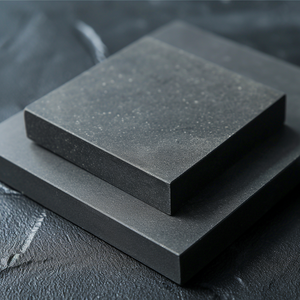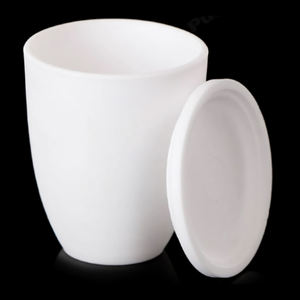Discover Premium Ceramic Products | Durability & Elegance United | Advanced Ceramics
1. Introduction
Just 24 hours ago, a major materials science breakthrough was announced: a U.S.-based advanced ceramics manufacturer unveiled a new production method for ultra-high-purity silicon carbide, significantly reducing impurities that can compromise performance in extreme environments. This innovation directly impacts the quality and reliability of silicon carbide crucibles—critical tools in metallurgy, semiconductor manufacturing, and laboratory settings.

Silicon carbide crucibles are prized for their exceptional thermal conductivity, chemical inertness, and resistance to thermal shock. But what exactly are they, and why are they preferred over alternatives? In this article, we’ll break down everything you need to know about silicon carbide crucibles and their role across industries—from heavy-duty foundries to your kitchen countertop.
2. What Is a Silicon Carbide Crucible?
A silicon carbide crucible is a container made from silicon carbide (SiC), a compound of silicon and carbon known for its extreme hardness and thermal stability. These crucibles are engineered to withstand temperatures exceeding 1,600°C (2,912°F), making them ideal for melting metals like aluminum, copper, and even precious alloys without degrading or contaminating the melt.
Unlike traditional clay-graphite crucibles, silicon carbide crucibles offer superior oxidation resistance and longer service life, especially in continuous high-temperature operations. Their dense microstructure minimizes metal penetration and slag adhesion, ensuring cleaner melts and reduced downtime for maintenance.
3. Key Properties and Advantages
Silicon carbide crucibles stand out due to several key characteristics:
- Exceptional thermal shock resistance
- High thermal conductivity for rapid, even heating
- Excellent chemical stability against molten metals and slags
- Mechanical strength that maintains integrity at elevated temperatures

These properties make silicon carbide crucibles a go-to choice in foundries, research labs, and specialty metal production facilities worldwide.
4. Silicon Carbide vs. Other Advanced Ceramics
When comparing materials for high-temperature applications, engineers often weigh silicon carbide against alternatives like boron carbide and silicon nitride.
Boron carbide vs silicon carbide: While boron carbide is harder and used in armor and abrasives, it’s more expensive and less thermally conductive than silicon carbide. For crucibles, silicon carbide offers a better balance of cost, durability, and heat management.
Silicon nitride, on the other hand, excels in fracture toughness and is commonly used in components like silicon nitride ceramic plates, silicon nitride rings, and custom silicon nitride heat shields. Some manufacturers even operate a silicon nitride crucible factory for niche applications requiring extreme impact resistance. However, silicon nitride generally has lower thermal conductivity than silicon carbide, making it less ideal for rapid heating scenarios.
5. Beyond Crucibles: The Versatile World of Silicon Carbide Ceramics

Silicon carbide’s utility extends far beyond crucibles. Its robust properties have inspired a wide range of consumer and industrial products.
In the kitchen, you’ll find silicon carbide ceramic dinnerware—including silicon carbide ceramic dinner plates, silicon carbide ceramic baking dishes, and even silicon carbide ceramic butter dishes with lids. Brands like Staub have explored silicon carbide baking dish staub designs for superior oven-to-table performance. Whether it’s a silicon carbide ceramic casserole dish with lid or silicon carbide ceramic serving bowls, these items combine durability with elegant aesthetics—available in black, white, blue-white porcelain styles, and even festive silicon carbide christmas ceramic platters.
Industrially, silicon carbide appears in forms like rbsic silicon carbide tile blocks, silicon carbide ceramic columns, silicon carbide bricks, and silicon carbide burner nozzles. Plumbing and fluid systems utilize silicon carbide ceramic pipes and tubes—including silicon carbide thermocouple protection tubes and silicon carbide porous ceramic tubes for filtration. For precision tools, there are silicon carbide grinding discs, silicon carbide ceramic sanding discs, and silicon carbide diamond grinding discs for pottery.
Even hardware components benefit: silicon carbide ceramic disc taps, silicon carbide ceramic quarter turn taps, and silicon carbide ceramic tap glands rely on SiC’s wear resistance and smooth operation.
6. Manufacturing and Customization
Modern production techniques allow for both mass-produced and custom silicon carbide components. From silicon carbide ceramic plates for painting to handcrafted silicon carbide ceramic children’s plates, the material adapts to diverse needs. Similarly, industrial clients can order tailored solutions like silicon carbide ceramic tubes for furnace use or silicon carbide mullite tubes for specialized thermal environments.
The growing demand has also spurred interest in the high purity silicon nitride powder market, as manufacturers seek hybrid or alternative ceramics for next-gen applications. Yet, silicon carbide remains dominant in high-heat, high-wear contexts due to its unmatched combination of properties.
7. Conclusion
From melting gold in a jeweler’s workshop to baking a casserole in a silicon carbide ceramic oven dish, silicon carbide crucibles and related products demonstrate the remarkable versatility of this advanced ceramic. With ongoing innovations in purity and manufacturing—like the recent breakthrough in ultra-clean SiC production—the future of silicon carbide in both industrial and domestic settings looks brighter (and hotter) than ever.
Our Website founded on October 17, 2012, is a high-tech enterprise committed to the research and development, production, processing, sales and technical services of ceramic relative materials such as What. Our products includes but not limited to Boron Carbide Ceramic Products, Boron Nitride Ceramic Products, Silicon Carbide Ceramic Products, Silicon Nitride Ceramic Products, Zirconium Dioxide Ceramic Products, etc. If you are interested, please feel free to contact us.
